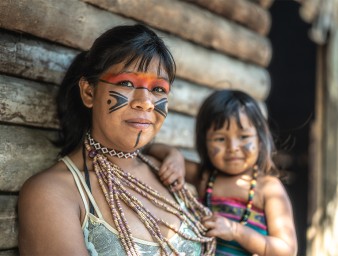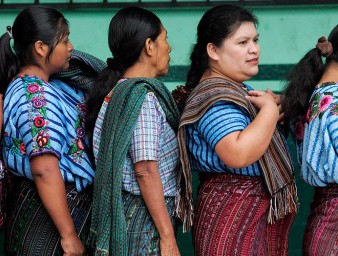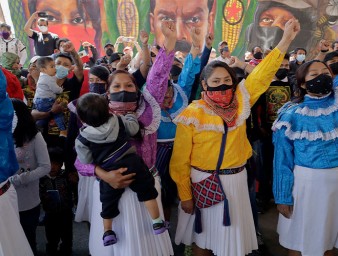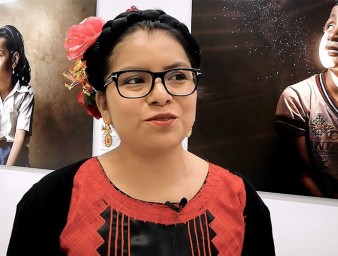Countering COVID-19 misinformation in indigenous communities in Brazil
15 October 2021
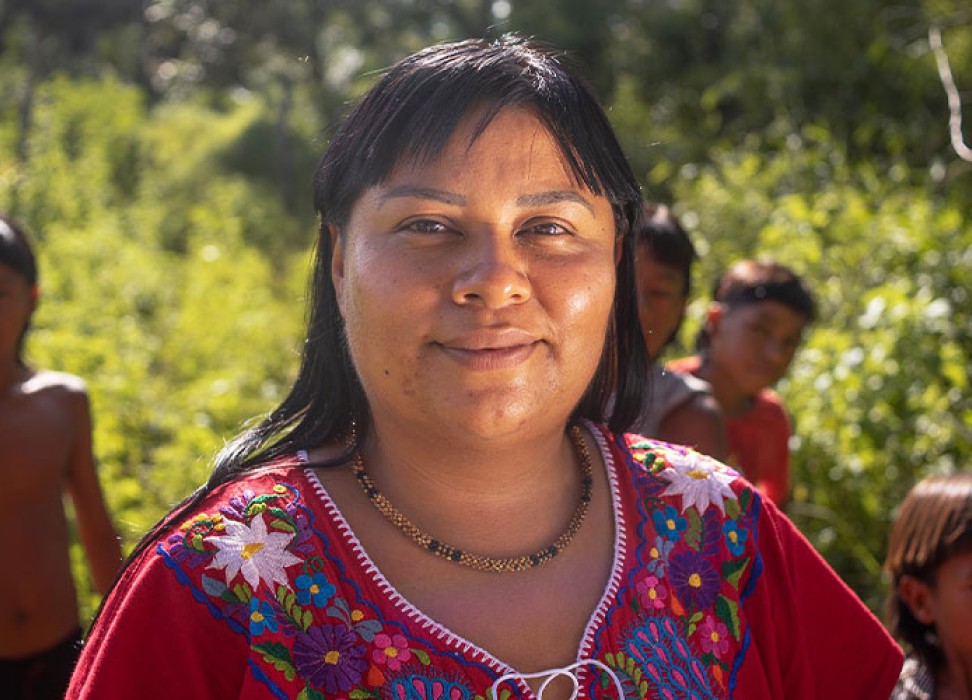
“When the first case was reported in our community, in fact the first death, that is when we realized that this was not just happening to our community, that it was not just our indigenous people, but that the virus was affecting the entire Brazilian society,” said Ro’otsitsina Juruna, UN Human Rights Senior Indigenous Fellow from Brazil.
Ro’otsitsina is a member of the Xavante people who dwell in the Namunkurá community in the State of Mato Grosso, western Brazil. The Xavante people comprise some 22,000 members spread out in nine different indigenous lands. According to Ro’otsitsina, to date, more than 900 Xavante people have developed COVID-19 and more than 50 have died. More than 1000 indigenous deaths were reported in Brazil.
Even before the outbreak reached her community, the Xavante had started organizing themselves to respond to the pandemic as, Ro’otsitsina pointed out, “It was almost inevitable that the virus would reach our community because of the flow of indigenous people from the community to the city and back.”
Her organization, Namunkurá Associação Xavante, soon started raising awareness about risks related to the pandemic on social media. They created cards and shared news reports on the pandemic in Portuguese and the Xavante language.
At the national level, the Special Secretariat for Indigenous Health, which serves Ro’otsitsina’s community through the Xavante sanitary district, started sharing information about the virus from the beginning of the outbreak and has been encouraging health professionals in the area to join in those efforts. However, the campaign has not been effective as quickly as they had hoped because of reticence from the local population.
Indigenous leaders were at first unwilling to enforce prevention measures such as physical distancing, which was contrary to their traditional collective way of life. Eventually, they gathered in community councils, a “wara”, where only men are usually allowed. However, this time the entire community was mobilized to learn about the pandemic and respond collectively.
During the pandemic, indigenous peoples around the world have been seeking their own solutions. They have used traditional knowledge and practices such as voluntary isolation, and sealing off their territories, and other preventive measures, to curb the spread of infection.
In the first stages of the outbreak in the Xavante community, traditional medicine was used to minimize symptoms of the disease in those infected. “Many indigenous people did not want to take the so-called Western medicines, which are offered by indigenous health services, so instead they began to take and practice more traditional medicine, through roots, teas, and ablutions,” Ro’otsitsina explained. “I believe this strengthened our culture.”
When the COVID-19 vaccines became available, a number of high-level officials and religious groups, Ro’otsitsina pointed out, started spreading misinformation about the vaccines.
“There was a fake news network all over Brazil and this information came to our communities,” she said. “As a result, many indigenous people became resistant to immunization.”
To counter vaccine misinformation and resistance, Ro’otsitsina’s organization produced a series of videos, including one entitled “Who loves, cares” that showed the community the importance of vaccines to save lives, appealing to people’s responsibility to their families and community. The organization also set up a vaccination programme with the support of community leaders, who were looked by the community as a reliable source of knowledge and information.
The organization also educated indigenous people on their rights but also duties. Through the Articulação dos Povos Indígenas do Brazil – a network of indigenous movements - indigenous peoples requested the national and local authorities to take responsibility in the prevention and fight against the pandemic in their communities. As a result, indigenous peoples were identified by the Government as a priority group for vaccination and the first and second doses of the vaccines are guaranteed to them.
Although Ro’otsitsina’s Namunkurá community was prioritized for access to health services and vaccines against COVID-19, as well as receiving information in their native language on the pandemic, many other indigenous communities around the world experience poor access to healthcare, and significantly higher rates of communicable and non-communicable diseases. Further, most nearby local medical facilities, if and when available, are often under-equipped and under-staffed. Even when indigenous peoples are able to access healthcare services, they can face stigma and discrimination.
The UN Human Rights guidance on indigenous peoples and COVID-19 recommends that States take urgent action to ensure that timely, accessible and accurate information about prevention and care, how to seek help in case of symptoms, and what is being done to address the pandemic, is made available to indigenous peoples living in their ancestral territories and in urban contexts, in as many indigenous languages and formats (oral, written, child friendly) as possible.
“I believe that it is only through knowledge, talking about what human rights are, that we can make a little progress. But it is not enough for us to educate indigenous communities, talk about these human rights, if such human rights are violated by the State,” Ro’otsitsina said. “We need to know what we can do to defend our rights and make these de facto effective.”
This story is part of Human Rights Champions – a recurring series featuring portraits of human rights defenders or organizations that stand up for human rights.
Disclaimer: The views, information and opinions expressed in this article are those of the persons featured in the story and do not necessarily reflect the official policy or position of the Office of the UN High Commissioner for Human Rights.
